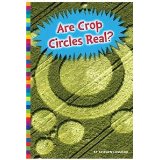2018 School Spending Survey Report
Are Crop Circles Real?
9781607538042.
ea vol: 32p. (Unexplained: What's the Evidence?). ebook available. bibliog. index. maps. photos. Amicus. 2015. lib. ed. $28.50. pap. $9.99.
COPY ISBN
VERDICT Adequate introductions for libraries needing further materials on these topics.
The intriguing questions remain (necessarily) unanswered in these slim books. Still, the paranormal-mystery topics are perennially popular, and the books' copious illustrations and photographs, accessible texts, and clear organization satisfy some requirements of report-writing...as long as no conclusions must be drawn. Reading list, websites. Glos., ind. Review covers these Unexplained: What's the Evidence? titles: Are Crop Circles Real?, Is the Bermuda Triangle Real?, and Is the Loch Ness Monster Real?.
ALREADY A SUBSCRIBER? LOG IN
We are currently offering this content for free. Sign up now to activate your personal profile, where you can save articles for future viewing





Be the first reader to comment.
Comment Policy:
Comment should not be empty !!!